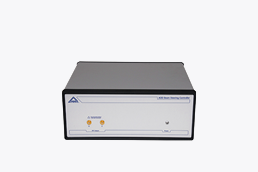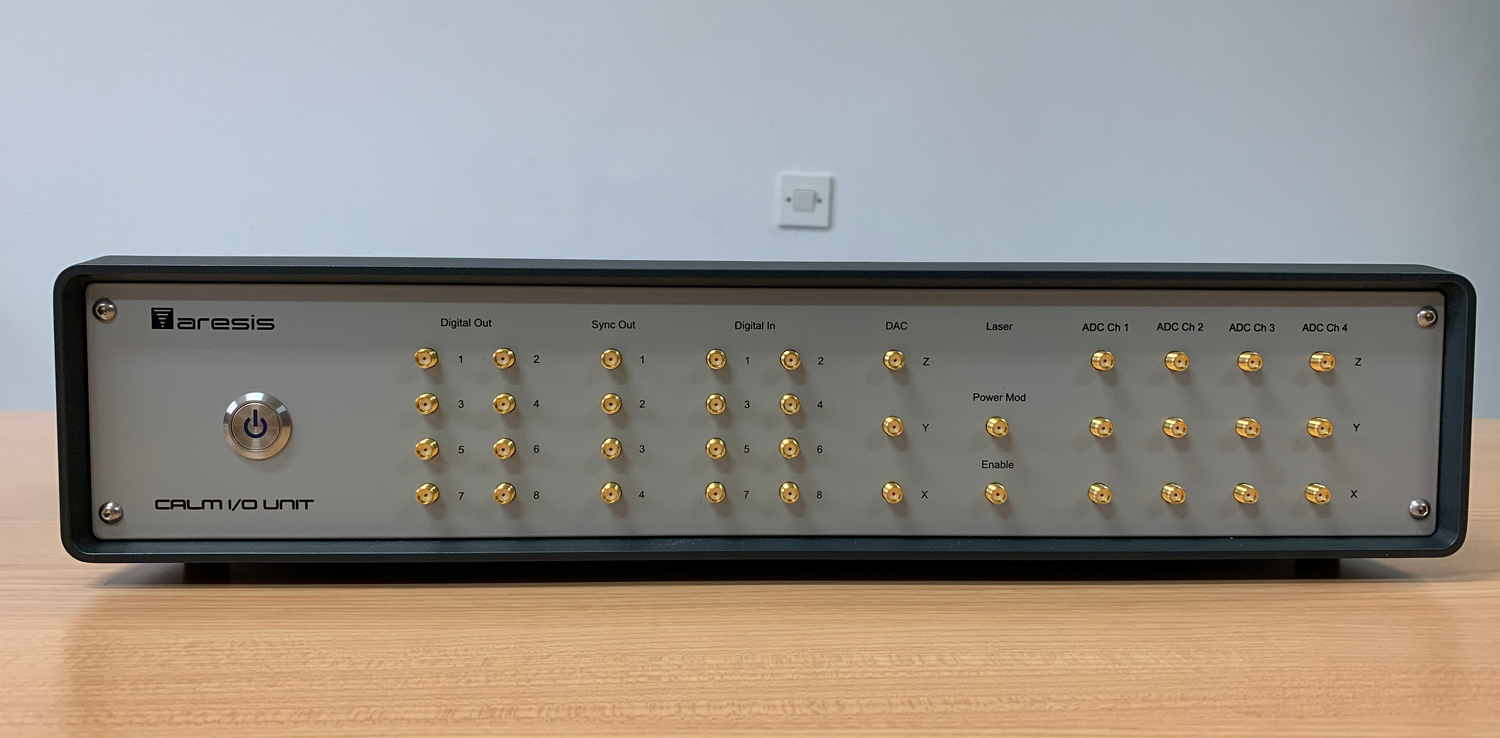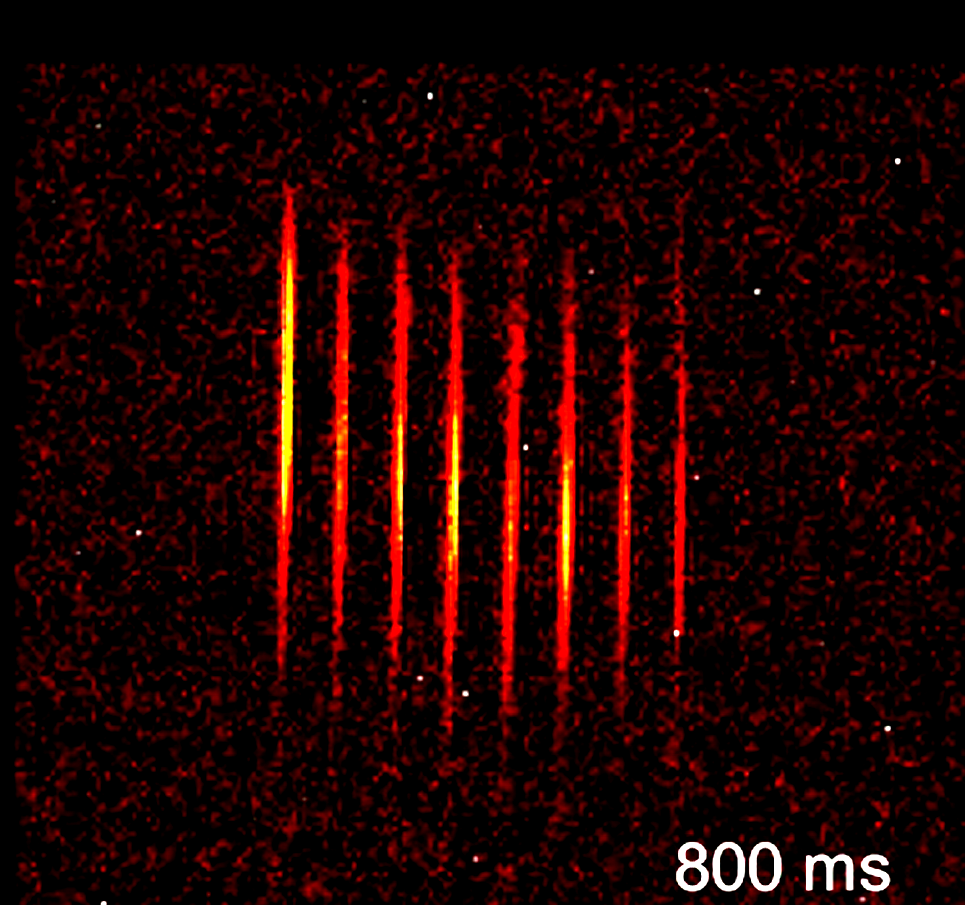2019年3月,全球第一台商业化激光冷原子捕获操控系统,在欧洲约瑟夫史蒂芬研究所量子计算实验室顺利安装。随后的两周内,研究人员利用这套系统成功进行了一系列冷原子操控实验测试,包括低于1uK的原子捕获操控,nK级玻色-爱因斯坦凝聚(BEC)捕获操控,以及阵列捕获操控,获得了理想的实验结果。用户对此非常满意,认为这套系统极大提高了实验效率和研究进程!
CALM系统是一个用于冷原子捕获实验的全自动光镊系统。它具有强大的扩展性,可与系统外设备进行同步控制并获取数据,能够与实验室现有装置(样品腔、光学平台等)完美结合。该系统由三个单元组成:
1. CALM-1064A:升级改造后的Tweez305。具有适用于原子捕获应用的固件,对光学出口进行了适配性改造以方便与现有的样品腔整合,以方便安装在光学平台上。
2. CALM-SCU1:同步控制单元,可实现外部设备与光阱运动的精确同步。例如,模拟输出可以控制与光阱定序器精确同步的外部磁铁。数字输入和输出可在主模式或从模式下实现同步。通过调制输入可以轻松实现对光阱位置和强度的外部控制。
3. CALM-WS1:带预装应用软件的Win10 Pro PC工作站。
用户需要添加一个光束转向镜,聚焦镜头和支柱(ThorLabs)来连接光学CALM-1064A单元到光学平台。因为这些组件的选择取决于特定的用户配置,所以在CALM系统中不是标准配置。
对于想要构建三维光镊的用户,CALM系统可使用两个垂直的CALM-1064A光镊单元构建三维捕获、操控系统。两个光镊单元都通过CALM-SCU1同步控制单元实现硬件同步,并由同一应用软件控制,从而实现对整个硬件系统的统一和有效控制,以保证整个实验装置的时序一致性。
CALM系统脱胎于广受赞誉的Tweez300系列高速多光阱纳米光镊与测力平台。Twee系列光镊已经有十几年的历史,其稳定,可靠,性能优越,为Aresis在光力捕获与操控领域赢得了极高的声誉。
Recent highlight: In collaboration with Aresis –A world-leading manufacturer of high-end laser tweezer systems, we have trapped and manipulated seven atomic clouds each containing 20.000 cesium atoms at 1 microkelvin. (1.5.2019).

The Greek letter sigma representing the logo of the Jožef Stefan Institute.
Welcome to the website of the Slovenian cold atom lab. In 2016, we achieved the first Bose-Einstein condensation in South-Eastern Europe.
BEC is a state of coupled bosonic atoms at a temperature near absolute zero. Under these conditions, a large fraction of the atoms occupy the lowest quantum state, while the quantum nature of atoms is manifested in the form of superfluidity. The superfluidity is a macroscopic phenomenon where the material behaves as a quantum fluid that flows without viscosity and is analogous to the phenomenon of superconductivity in solids. Because of this analogy the BEC can be used as a quantum simulator of solid state physics, e.g., to study superconductivity and, in more general, to explore the physics of strongly correlated electrons.
Using lasers and magnetooptical trap the cesium atoms in the ultrahigh vacuum are first slowed down and caught, and thus cooled to the temperature range of several hundred μK. In the next step, by means of Raman transitions, the cesium atoms end up in one of the well-defined low-lying energy states and the temperature falls below 1 μK. At the same time the atoms are caught in the so-called optical trap by a set of extremely powerful laser beams. The atoms are further cooled by evaporation, which lowers the temperature to the range of nK, which is low enough for the atoms to condense.
We established a few research guidelines, potential avenues for future research, where cold atoms will be used as an experimental method.
Experiments on the optical lattice: Atomic quantum gases in optical lattices are becoming the main simulating tool for solid state physics systems. Atoms play the role of electrons in solids, while their motion through the lattice can be well controlled. Using optical lattices one can explore the physics of strongly correlated electrons, which leads to superconductivity and magnetism. With the proper choice of optical lattice geometry it is also possible to explore frustrated magnetic systems, where theory predicts exotic ground states, such as the spin liquid.
Atomic magnetometry: The quantum technologies based on cold atoms have an enormous potential for innovation both on a fundamental level and in real-world applications such as quantum-based sensors for gravity, acceleration, rotation and magnetic fields. We are planning to develop a high-resolution cold-atom magnetometer with a potential to be used in various fields, including a signal detection in NMR and MRI, as well as NQR, control of magnetic fields in precise experiments, such as in atomic physics or direct measurement of magnetic fields from the heart and brain.
Synthetic fields: Although the atoms are charge neutral, one can use laser light and magnetic field gradients to create effective scalar and vector potentials, which play the role of electric and magnetic forces on the atoms. Thus it is possible to simulate quantum phenomena known from solid state physics, e.g. the quantum Hall effect.
Nonequilibrium dynamics: While the physics of equilibrium phenomena is fairly well known and accepted, the physics of nonequilibrium phenomena is far less explored, is much less intuitive and it can lead to new findings, which might have far-reaching implications for general science, including the social sciences and economics. Because of their flexibility, cold atoms provide exceptional laboratory for the study of nonequilibrium phenomena.











